
Blog-post author Daniela Giosuè, Researcher of English Language and Translation, Università degli Studi della Tuscia, Viterbo, DISUCOM
@danielagiosue
Much of the information in this blog-post comes from an article on the church of Santa Maria di Foro Cassio published in 2008 by palaeographer Carlo Tedeschi and art historian Simone Piazza (see Piazza, Tedeschi 2008). The article contains an extensive and, for the time being, updated bibliography on the church (omissions, if any, are entirely my own) to which reference is made for any further details. It also proved to be an effective contribution to a years-long sensitisation campaign aimed at saving from utter ruin what at that time Carlo Tedeschi rightly termed «the poor remains of […] one of the noblest monuments in Tuscia» (28).
As a result of the campaign, which put an end to several decades of complete abandonment, the structure has recently been secured and the roof and the frescoes restored. These interventions will hopefully help safeguard what remains of the wonderful frescoes dated between the 11th and the 12th centuries described in the article [see images 19 to 20 and 21 to 31 below] (29-33, passim). Other frescoes, mainly dated to a later period and up to the 15th century, and still extant before the restoration, went in the meantime completely lost.
I am much indebted to Carlo Tedeschi for most of the photos and for many clarifications on the state of the art in the studies on the monument.
For those who can read Italian or are interested in the bibliography, the article is available here.
Dating back to the 2nd century BC, the origins of the Roman settlement of Forum Cassii are probably contemporary with the construction of the consular road Cassia. Lying between Viterbo and Vetralla, at about 44 miles northwest of Rome and 0.6 miles from the current route of the road Cassia (SR2 on the map below; image 4), the area on which it stood still retains its name, in Italian Foro Cassio.

While the site originally owed its importance to its being a station on the old Roman road, after the foundation of the early medieval church of Santa Maria di Foro Cassio, the only monument which is still extant, it continued to maintain a key role as pilgrimage station on the Via Francigena throughout the High Middle Ages.
Here are an aerial view and some photos of the exterior of the church after the restoration:
Of the Roman forum, of which – according to contemporary sources – many vestiges were still visible until the 17th century (Serafini 1648: 44-47), nothing remains on the surface.
As well as in many other parts of the surroundings, slabs of the ancient road Cassia can still be seen or found a little under the ground. For more in this regard, see the results of a survey carried out in 2003 by the British School at Rome, available here.
The relevance of Forum Cassii in the course of many centuries is attested by the fact that it is mentioned in four very famous ancient itineraries, namely the Antonine Itinerary (2nd-3rd c. AD) (see Parthey, Pinder 1848: 137), the Peutinger Table (4th-5th c. AD) [here & here], the Ravenna Cosmography (7th c. AD) (see Parthey, Pinder 1860: 285, 488), and the year 990 Itinerary of Archbishop Sigeric (see Ortenberg 1990) contained in BL MS Cotton Tiberius B V/1, ff. 23v–24r, available here.
It appears respectively as Foro Cassi in the first two texts, as Foro Casi in the third, and as Furcari in the fourth.
A bull issued by pope Leo IV (847-855) on 22nd February 852, in which Forum Cassii is mentioned as massa (great land property), testifies its continuing economic importance during the early medieval period.
Its subsequent history after the foundation of the church, reconstructed with extreme difficulty through rare documents, confirms the function of Forum Cassii as economic stronghold of the Roman Tuscia until the modern age (Piazza, Tedeschi 2008: 28).
The below fresco from the left absidiole, showing Saint Benedict of Nursia (c. 480 – c. 547) on the right (35-37), suggests that for a time the site was run by Benedictine monks.
Although it is well known that in the modern age the church belonged to the Knights of Malta, who held the property until 1807, there is in this respect a question of great interest which is still unresolved; it concerns the lack of authentic evidence for the donations of Forum Cassii to the Knights Hospitallers (28).
Several modern authors, the first of whom was Paolocci, mention three pontifical diplomas by which the church and its lands would have been donated to the Hospitallers (Paolocci 1907: 67). The first diploma would have been issued by Pope Innocent II in 1130, the second by Celestine II in 1144, the third by Eugene III in 1145. The donation would later have been confirmed by Pope Anastasius IV (1153-1154).
The documents cited by Paolocci are unfortunately not published in major collections of papal privileges (Piazza, Tedeschi 2008: 28, n. 7). For this reason, investigation into these sources has not yet been taken further, but it would definitely be worth other attempts.
As the church used to be the property of the Knights Hospitallers, it must have had, as a rule, a hospice for pilgrims built alongside. A will dated 29 December 1276, which is one of the few documents available for the High Middle Ages, proves that a leper hospital was also annexed to it (Egidi 1906: 236; Piazza, Tedeschi 2008: 28).
Another interesting element highlighted by Carlo Tedeschi is the inscription visible under the striking crucifixion scene on the counterfacade of the church, on the right of the door, reading as follows:
[- – -]s orate p(ro) nobis.

He states that it is the final part of a common and widely attested formula of apostrophe to the reader which is found in various contexts, including monuments connected with the practice of pilgrimage, and assumes that the complete formula might have read as:
Vos qui transitis / intratis / legitis orate pro nobis
According to the scholar’s epigraphic analysis, the inscription may be assigned to a period between the end of the 10th and the first decades of the 12th centuries (34).
The restoration brought to light new portions of the inscription and fresco, on which studies are still underway.
For the more curious, here are some videos of the church before the restoration:
References
- Egidi, Pietro (1906) ‘L’archivio della Cattedrale di Viterbo’, Bullettino dell’Istituto storico italiano 27: 7-382.
- Ortenberg, Veronica (1990) ‘Archbishop Sigeric’s Journey to Rome in 990’, Anglo-Saxon England 19: 197–246.
- Paolocci, Francesco (1907) Raccolta di notizie e documenti relativi alla storia di Vetralla, Vetralla: Gerardi-Zeppa.
- Parthey, Gustav and Pinder, Moritz, eds. (1848) Itinerarium Antonini Augusti et Hierosolymitanum, Berlin: Nicolai.
- Parthey, Gustav and Pinder, Moritz, eds. (1860) Ravennatis Anonymi Cosmographia, Berlin: Nicolai.
- Piazza, Simone and Tedeschi, Carlo (2008) ‘Le più antiche pitture di S. Maria di Foro Cassio a Vetralla (XI-XII secolo). Nuove indagini in vista della campagna di restauro’, Informazioni 20: 27-39.
- Serafini, Luigi (1648) Su Vetralla antica cognominata il Foro di Cassio, Viterbo: Mariano Diotallevi.

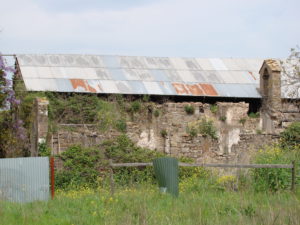
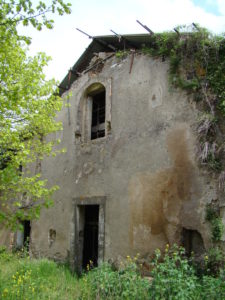

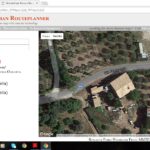

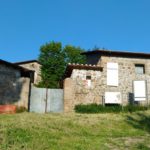
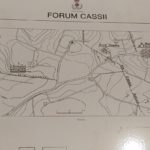
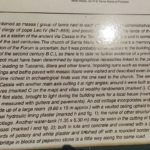





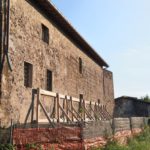
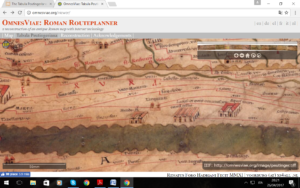

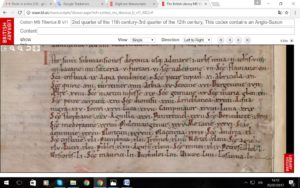

![Image 20. Santa Maria di Foro Cassio, left absidiole, particular © 2015 Carlo Tedeschi]](http://www7.bbk.ac.uk/pilgrimlibraries/wp-content/uploads/2017/08/img-20-giosue-150x150.jpg)

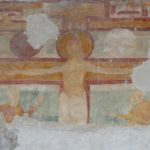

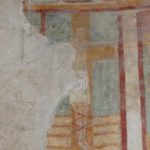
![Image 26. Santa Maria di Foro Cassio, counterfacade, particular. ©2015 Carlo Tedeschi]](http://www7.bbk.ac.uk/pilgrimlibraries/wp-content/uploads/2017/08/ing-26-giosue-150x150.jpg)
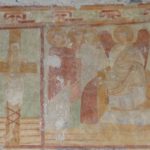

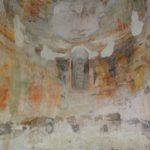

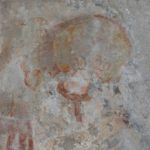



![Canterbury Cathedral Library (2013) [License: CC BY-SA 3.0]](http://www.bbk.ac.uk/pilgrimlibraries/wp-content/uploads/2017/03/Canterbury_Cathedral_-_library-150x150.jpg)








